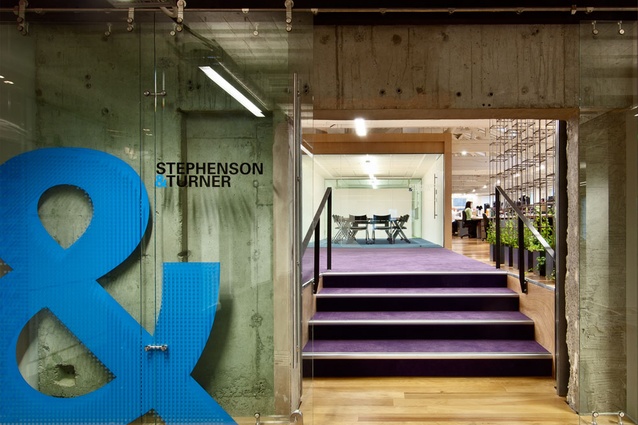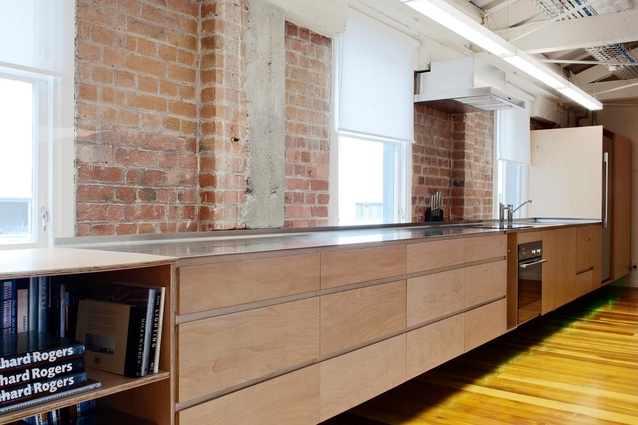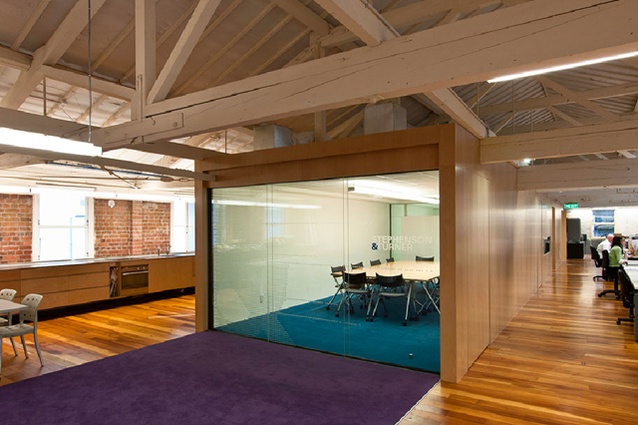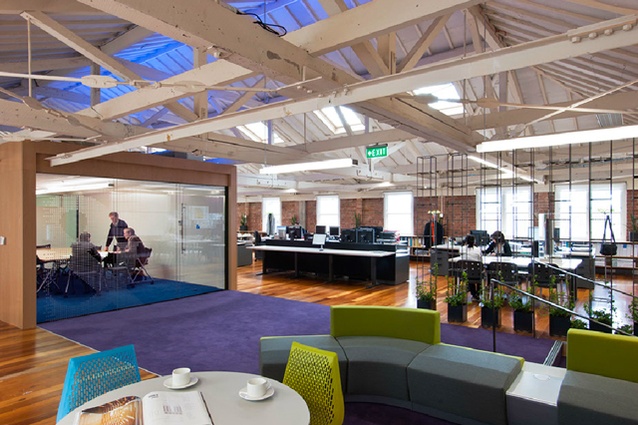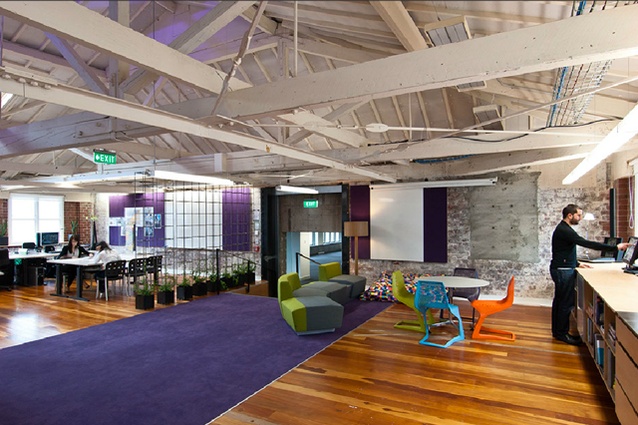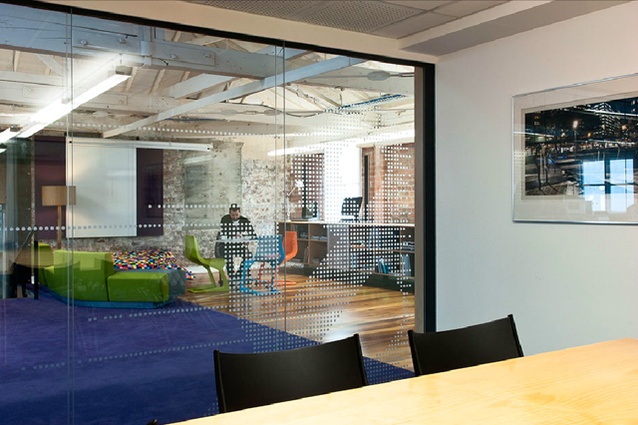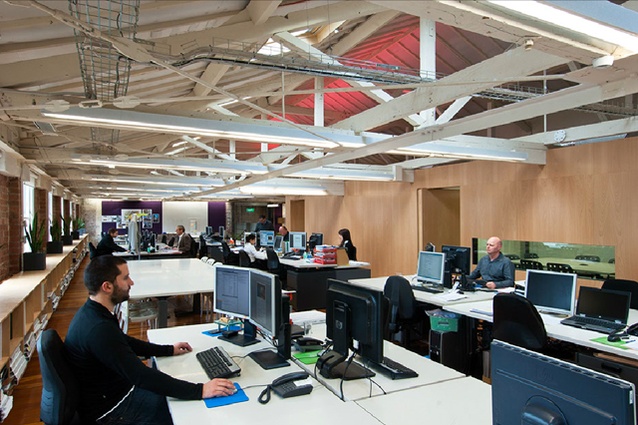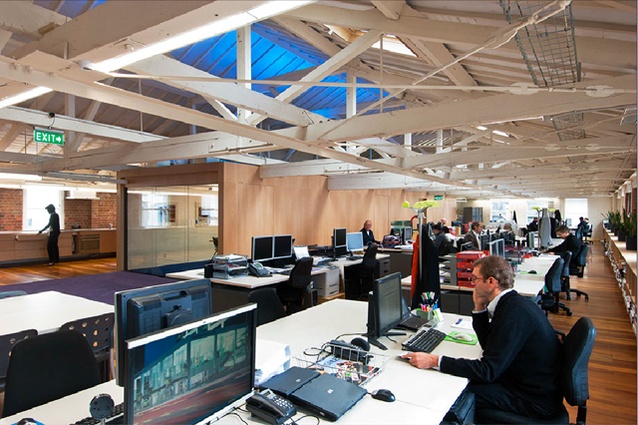Stephenson & Turner 6 Green Star office interior
For the fitout of its Wellington studio, Stephenson & Turner decided to prove that sustainable design is not necessarily about spending excessive money or adding worthless appendages.
At the wellington studio of Stephenson & Turner a large blue ampersand on the glass doors ushers the world into the company’s new 6 Green Star fitout. The fitout was awarded the highest possible rating by the New Zealand Green Building Council and is the first historic building in New Zealand to attain this level. And it’s a nice combination of new and old: underfoot new purple, olive and cobalt carpets made from largely recycled materials complement old gold, matai floorboards; overhead seismic bracing from 1989 adds strength to the original building built in 1899. The ceiling space is white, installed with 50mm insulation panels, and down the spine a designer got reflective with lighting that changes colour throughout the day.
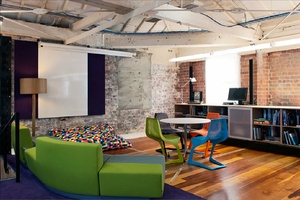
During the visit it was purple — like the carpet. S&T’s studio occupies the top floor of the original building. Access is through a building the firm actually built back in 1971, now another heritage aspect. At the entrance, ivy is beginning to climb a row of vertical garden wall frames on the right, and opposite there’s a colourful foyer with kitchen café area and an occupied bike rack — low energy transport being part of the company’s self-sufficiency ethos. Whiteboards are framed purple on exposed brick walls; a harlequin beanbag brings together the colours of furniture, flooring, walls and ceiling.
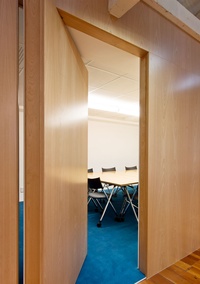
Meeting rooms on an axis with the main entrance are the only built spaces in the fitout and they bridge the kitchen café space from the open work areas that are well lit and ventilated.An intelligent lighting system adjusts artificial lighting in accordance with the level of available daylight. Other key elements of the design include user-controlled fresh air and heating (yes, the windows open), separation of utility areas — printers, for example — from the main area and systems to encourage a paper-free office environment. There is a comfortable juxtaposition of heritage and contemporary, light, space, colour and creativity combined with serious business — the team of intermingled architects, engineers and principals ready to go at their linear battery of workstations.
The fitout enables the company’s egalitarian approach to work, which they had not fully achieved in their previous premises on The Terrace, says chief executive Murray Pugh. “We pride ourselves on being able to produce integrated design solutions that aren’t just fantastic architecture or just fantastic function. [The new studio brings] that together through the expertise of engineers and architects in an environment where they feel comfortable doing that,” he says. S&T also wanted to demonstrate to the design industry and their clients that it is possible to achieve world-class interior fitouts within a tight budget. Wherever possible they reused or retained original materials and selected new ones based on sustainable principles. Murray says it’s an alternative to ”bowling and rebuilding”. “The majority of the building stock in New Zealand is getting older and they do need to be refitted to modern standards.
There is an avenue for developers to do something that is environmentally sustainable,” Murray said. And an interesting detail: the matai is a false floor. The original, now misshapen, dark, worn timber is about 90mm below. Some materials can’t be reused, but it’s nice to know they are there.

